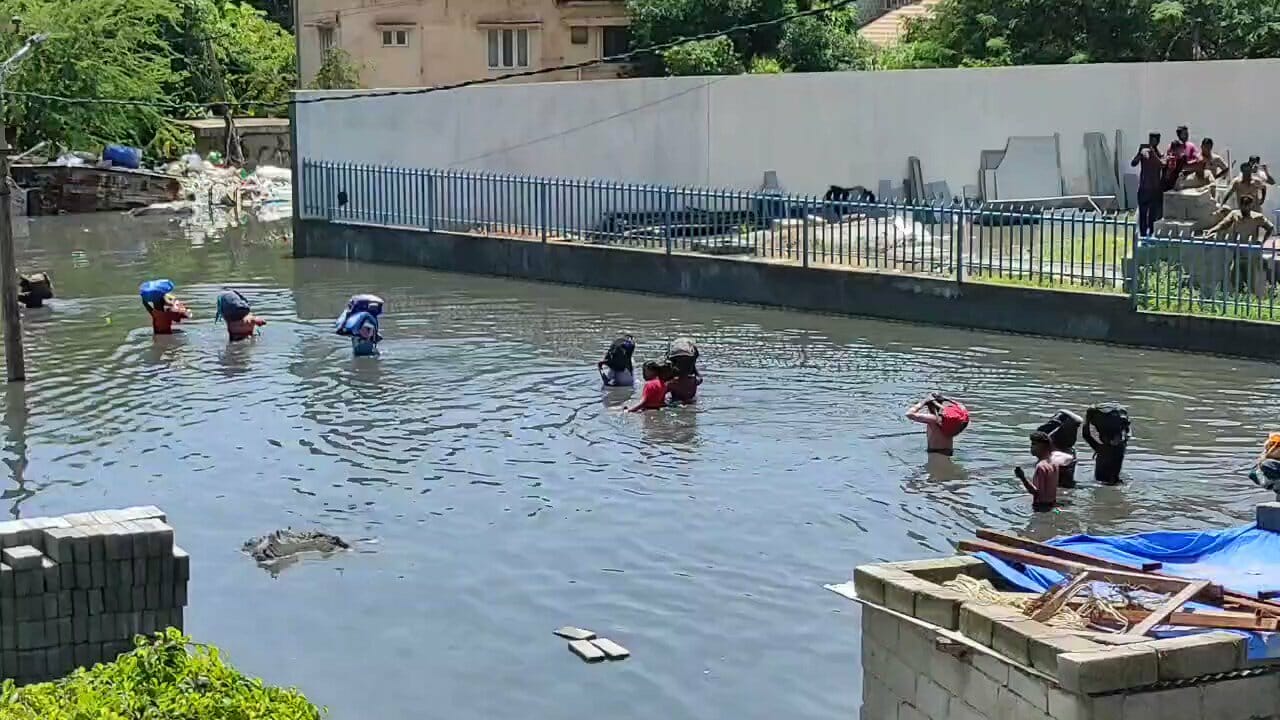Dr. Seema Javed
 Unprecedented floods in Bangladesh, followed by Assam floods, extremely heavy rains in Madhya Pradesh adjoining parts of Rajasthan, Pakistan floods and the recent Bengaluru floods, have shown how the quantum of extreme events have increased exponentially in South Asia due to climate change.The UN’s Intergovernmental Panel on Climate Change (IPCC) had already warned last year about the increase in extreme weather events across South Asia in the coming years.
Unprecedented floods in Bangladesh, followed by Assam floods, extremely heavy rains in Madhya Pradesh adjoining parts of Rajasthan, Pakistan floods and the recent Bengaluru floods, have shown how the quantum of extreme events have increased exponentially in South Asia due to climate change.The UN’s Intergovernmental Panel on Climate Change (IPCC) had already warned last year about the increase in extreme weather events across South Asia in the coming years.
With increasing urbanisation, our cities are at greater risk as the volume of damage in terms of loss of human lives, property damage and economic losses are higher than in rural areas. Cities like Mumbai, Kolkata, Bengaluru, Delhi and Chennai are home to millions of people and so high is the climate risk.
According to the IPCC, warming from 1.5°C to 2°C will increase extreme precipitation events across Asia, especially over East and South Asia. Extreme rainfall has direct and increasing consequences on urban flooding risk, which is further exacerbated by urbanisation trends that reduce land permeability, divert water flow and disrupt watersheds.
Mumbai floods 2005 can be termed as the first example of urban flooding, which brought the focus of experts and government on it.The flood of 2005 was truly a disaster as it receded only after seven weeks and affected 20 million people.
Bengaluru floods 2022 are the latest example, where India’s IT hub reportedly registered a loss of over Rs 225 crores.. While changes in Monsoon systems due to climate change led to torrential rains over the city, the situation worsened due to poor urban planning which did not let the water find its way out.Bengaluru was known as the city of lakes, which acted as rescuers from floods as well as droughts. Intense urbanisation process led to encroachment of wetlands, flood-plains, etc. causing floodway obstruction.
Chennai has already battled several floods and continues to be at risk. Climate change is making the city more vulnerable to these threats and poor management of waste disposal, water contamination and lack of drinking water, uncontrolled suburban sprawl and mismanagement in urban planning, are adding to the city’s woes. Due to its plain terrain Chennai lacks natural gradient for free run-off.

Major implications of urbanisation
Heat Island effect: Surface and atmospheric temperatures are increased by anthropogenic heat discharge due to energy consumption, increased land-surface coverage by artificial materials having high heat capacities and conductivities, and the associated decreases in vegetation and water-pervious surfaces, which reduce surface temperature through evapotranspiration.
Loss of aquatic ecosystems: Urbanisation has telling influences on the natural resources such as decline in the number of water bodies and/or depleting groundwater levels.
Loss of drainage capacity: Unplanned urbanisation has drastically altered the drainage characteristics of natural catchments, or drainage areas, by increasing the volume and rate of surface run-off. Drainage systems are unable to cope with the increased volume of water and are often encountered with blockage due to indiscriminate disposal of solid wastes.
“The main issue to deal with is to understand that different people in the city hold document capacities to cope with and adapt to seasonal floods. This is a deep environmental justice issue. Low-income households need safety nets to flood proof their homes. This means more inclusive and sustainable urban planning that holds penalties for those constructing and encroaching on urban wetlands.” said Dr Chandni Singh, Senior Researcher & Faculty Member, Indian Institute for Human Settlements.
“Urbanisation across the city continues to be unchecked, maximising on the most the city has. Bengaluru is doing nothing for adaptation. Political system and will is not aligned with climate resilient policy. In fact, there has been no political stability to battle climate risk as 15 chief ministers have changed in the last 20 years,” Dr Anjal Prakash, Research Director and Adjunct Professor, Bharti School of Public Policy, Indian School of Business & IPCC Author
China, India, Thailand and the Republic of Korea are coming up with various urban adaptation plans. Researchers and scientists have come out with following urban adaptation options:
- Infrastructural adaptation options: Infrastructural measures such as building flood protection measures and sea walls, and climate-resilient highways and power infrastructure
- Institutional adaptation: Sustainable land-use planning through zoning, developing building codes
- Nature ecosystem-based solutions: Ecosystem-based adaptation measures such as protecting urban green spaces, improving permeability, mangrove restoration in coastal cities, smart cities etc.
- Migration and planned relocation out of risk-prone areas
- Technological solutions and behavioural adaptation: Disaster management and contingency planning through Early warning systems (EWS), improved awareness and preparedness measures
 Jubilee Post News & Views
Jubilee Post News & Views





